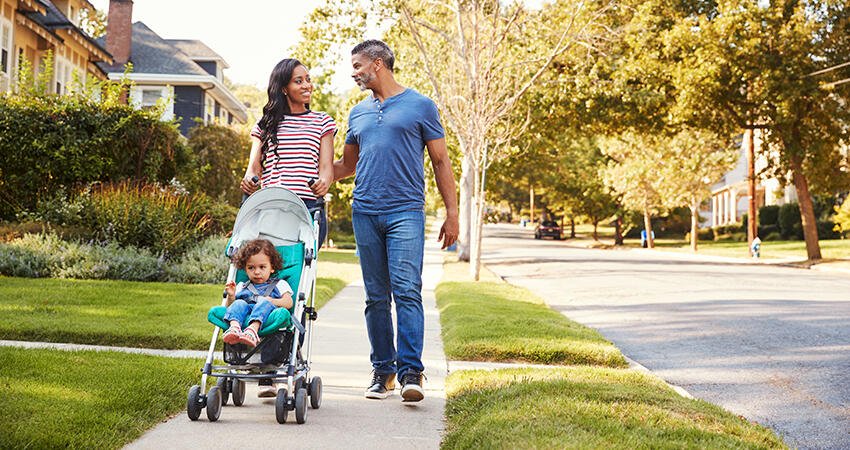
Monkey Business Images/Shutterstock
The Connection between Housing, Health, and Racial Equity
Healthy homes and neighborhoods make for healthy residents. Even before we are born, housing conditions affect our health. But not everyone has equal access to quality, accessible, and affordable housing.
Because of structural racism, people of color have faced barriers (PDF) to both quality health care and housing for generations. Long-standing racial inequities in the social determinants of health have caused stark racial health disparities. This research roundup demonstrates how decent, affordable housing can lead to better health outcomes among people of color. With this information, policymakers, advocates, and housing professionals can promote racial equity and avoid perpetuating health and housing disparities.
How housing location affects health
- Black and Hispanic hospital-based pediatric primary care patients* are more likely than white patients to live in census block groups with high violent crime rates.
- People living in neighborhoods with higher levels of deprivation — an index of neighborhood quality based on households experiencing crowding or severe housing cost burden, the poverty rate, median home value, educational attainment, and unemployment rate — face higher risk of heart failure, independent of individual socioeconomic and health factors. This study also found that participants living in the most deprived neighborhoods were more likely to be Black.
- In most states and counties, people of color are more likely to live near pollution emitting facilities, placing them at greater risk of contracting respiratory and cardiovascular diseases and premature death than white people.
- Compared with white people, Black people are 52 percent more likely to live in census block groups with heat risk-related land cover conditions, such as impervious surfaces and little green space, placing residents at greater risk for heat-related deaths and illnesses.
How housing segregation affects health
- Residential segregation increases the incidence of cardiovascular disease among Black adults.
- Among Black women, living in a highly segregated metropolitan area long-term is associated with the development of obesity.
- Neighborhoods in the Detroit metropolitan area with larger Black populations are more likely to have more residents with disabilities and higher rates of mortality. Higher homeownership rates within these neighborhoods reduce the association between Black residents and mortality.
How housing affordability and stability affect health
- A study of urban Illinois census tracts found high correlations between both eviction rates and eviction-filing rates with five negative health-related behaviors.
- Compared with white and Hispanic households, predominately Black, non-Hispanic households have a significantly higher average eviction filing rate and higher rates of smoking, obesity, lack of leisure time and physical activity, and sleeping fewer than seven hours. Middle-age Black people are more at risk for heart attacks and strokes if they have experienced foreclosure.
- Black and Latino renters are more likely to experience housing instability than their white counterparts. And housing instability is associated with adverse health outcomes for caregivers and children.
- A study conducted by the American Heart Association found Latino residential areas at higher risk for foreclosure have higher rates of hypertension and hypercholesterolemia than areas at lower foreclosure risk.
- Public housing residents, the majority whom are Black and Hispanic (PDF), are more likely than the general community to have poor health.
- Latino public housing residents in the Bronx are more likely to experience diabetes, heart attacks, and hypertension than Latino Section 8 voucher holders or low-income Latinx families without housing assistance.
* For this round-up, we have maintained the same language as the studies. However, we recognize that the term “Latinx” may be more inclusive of the way members of this group self-identify.


